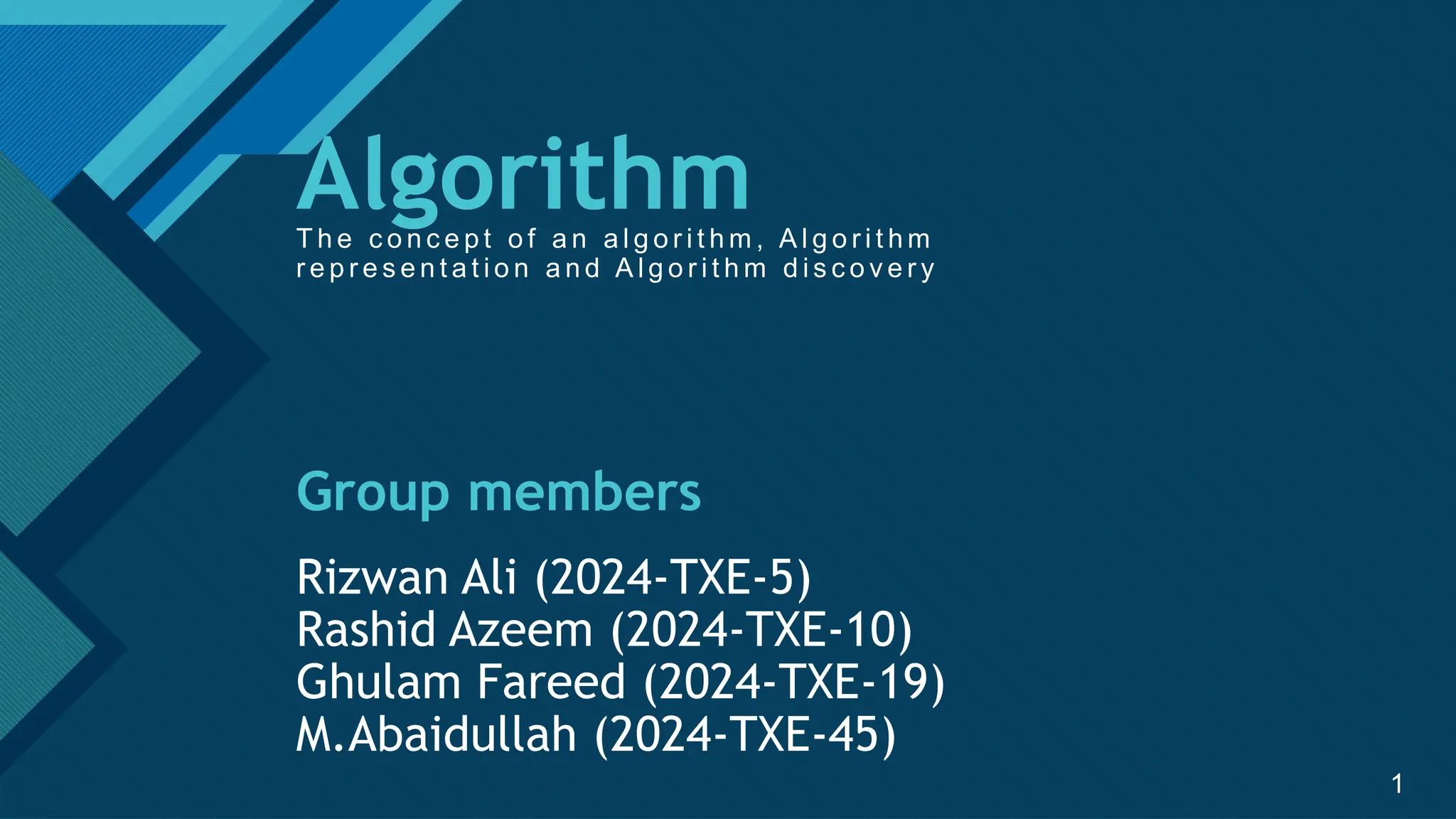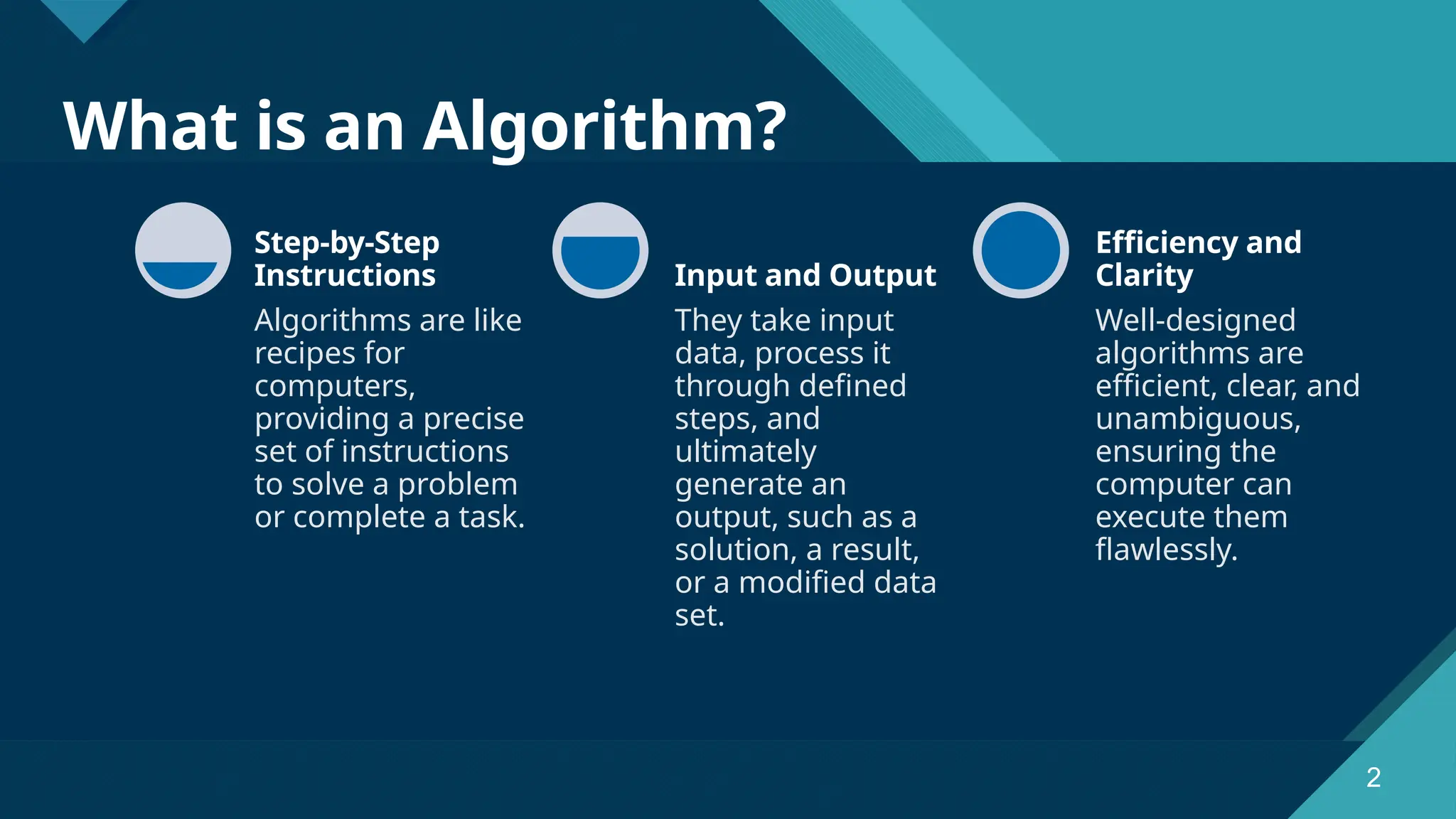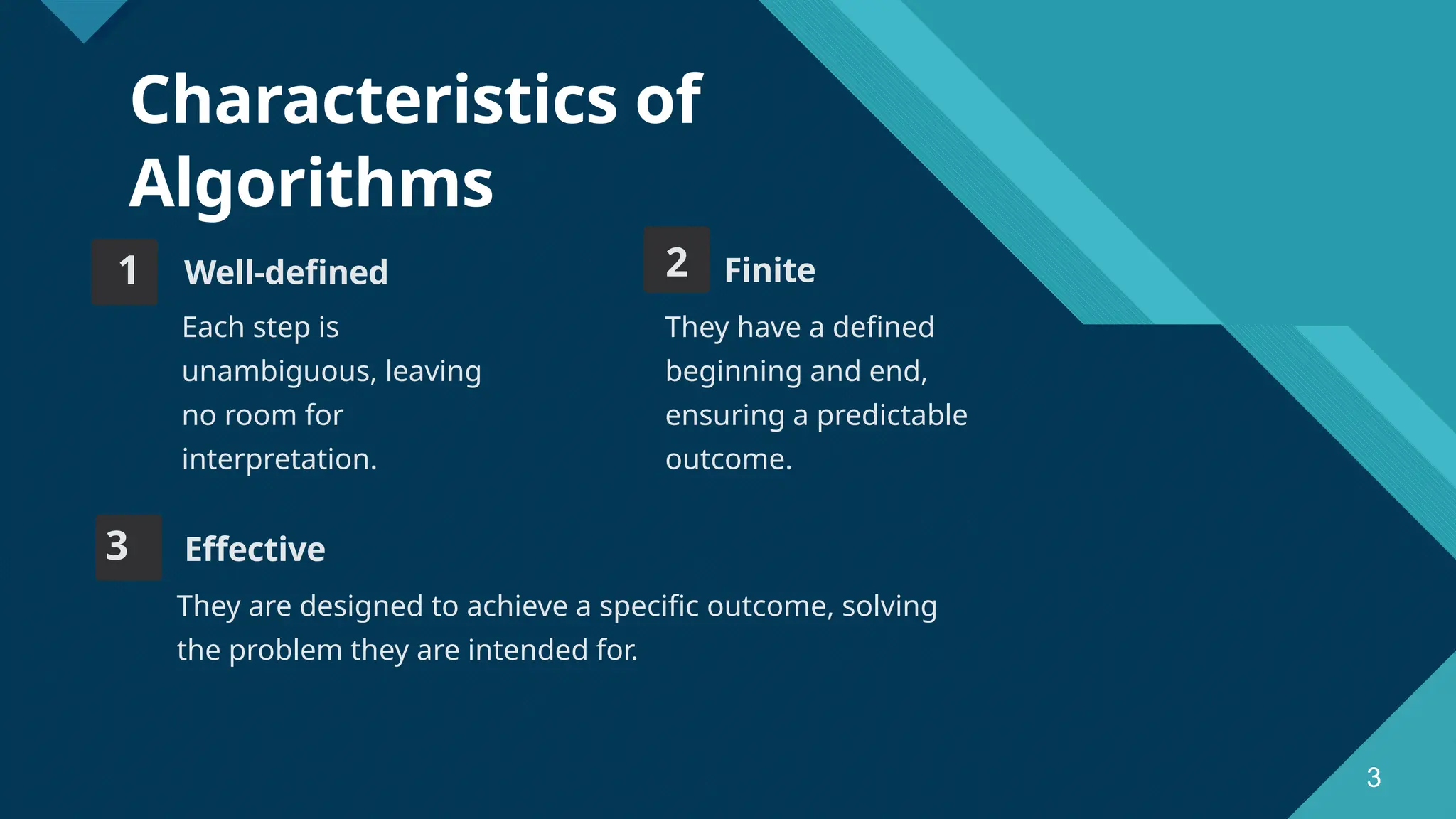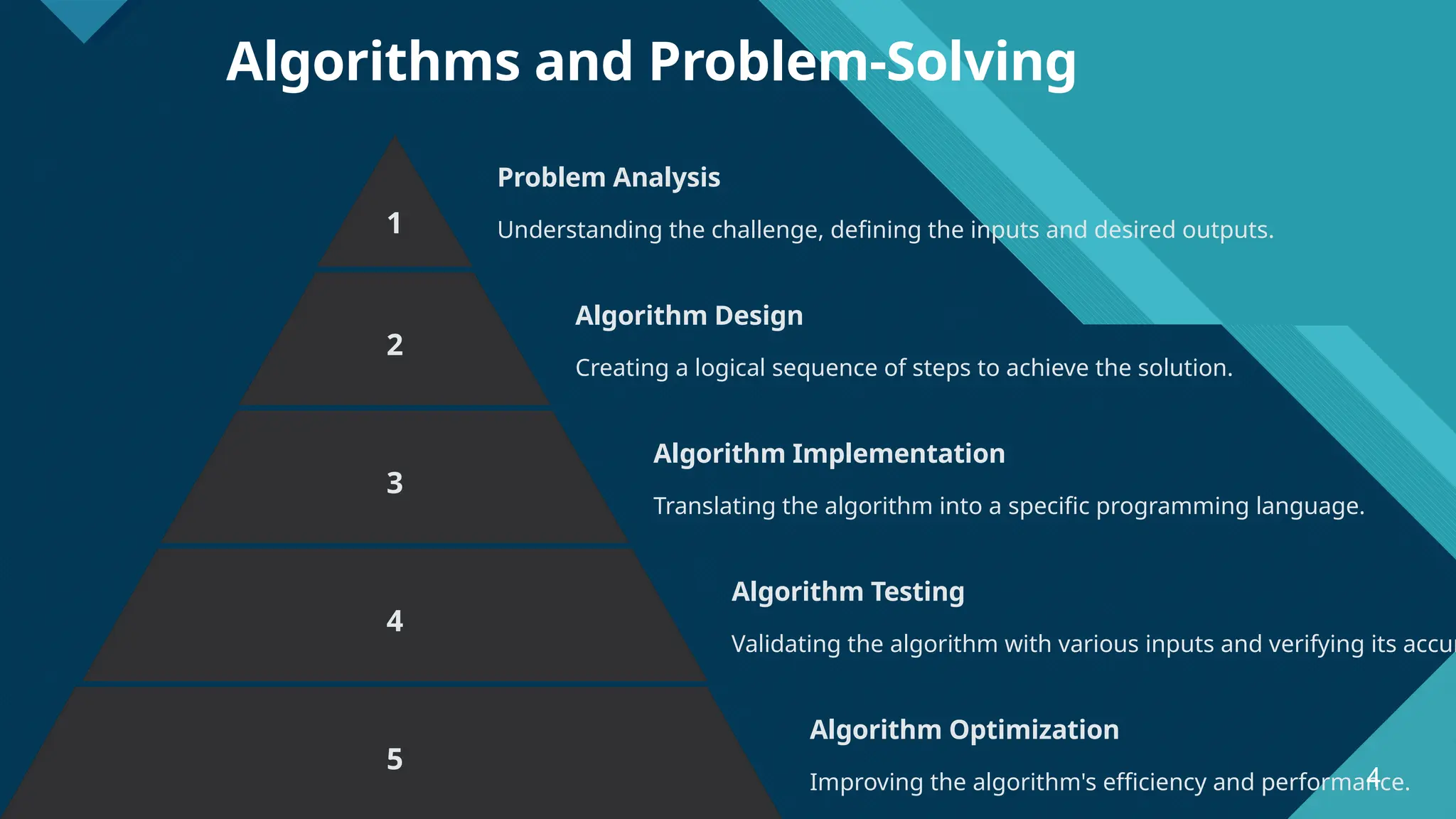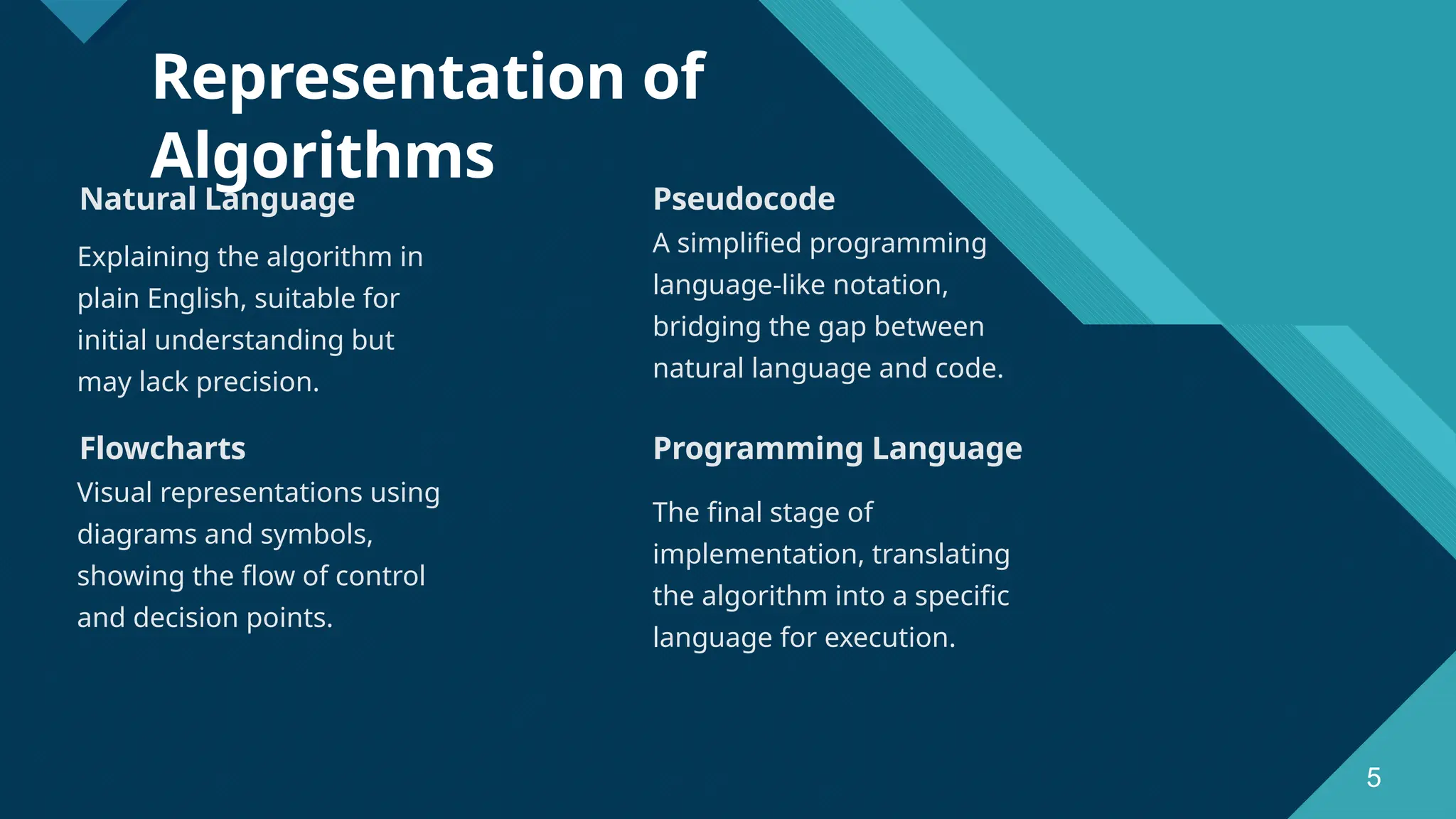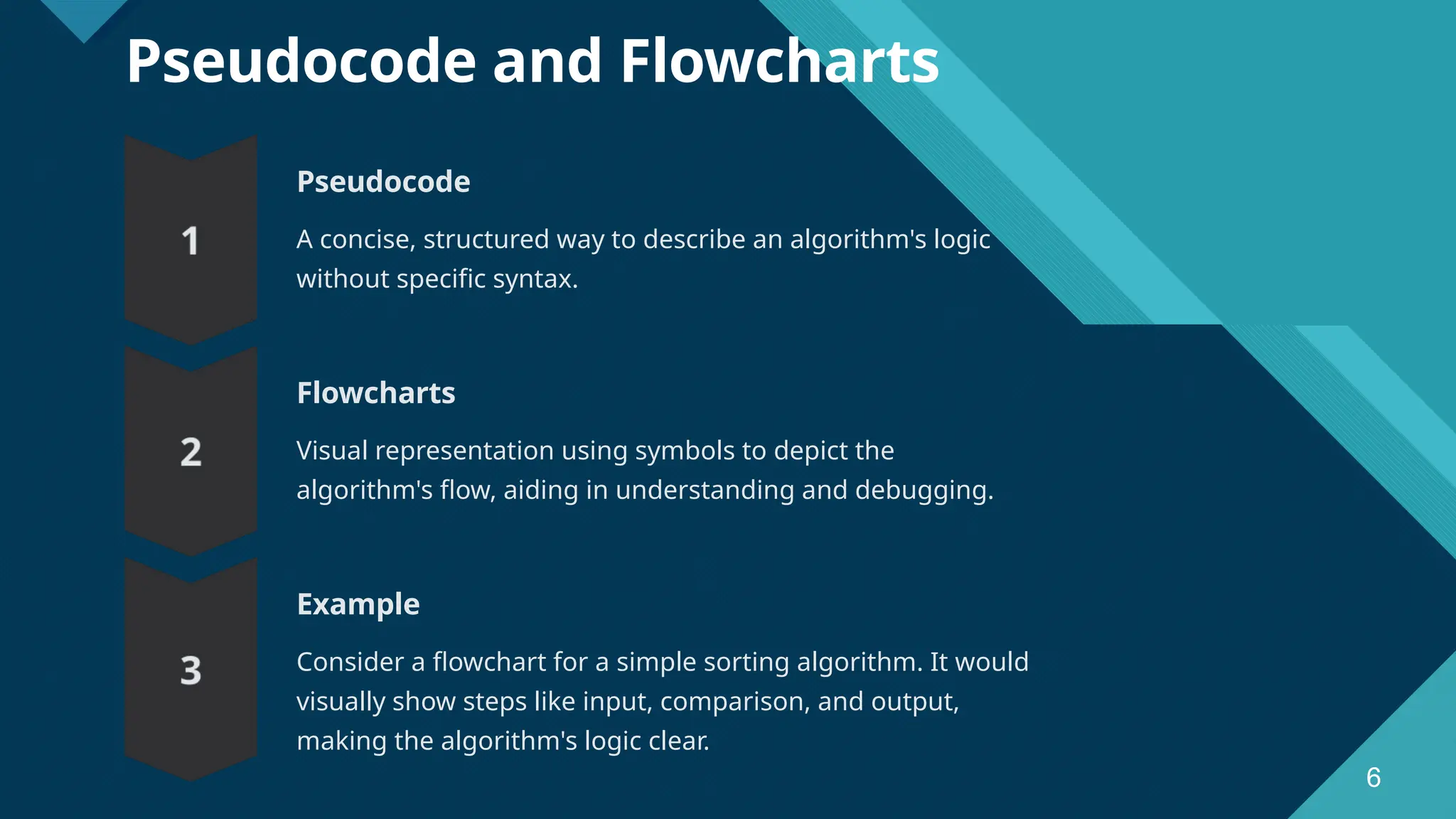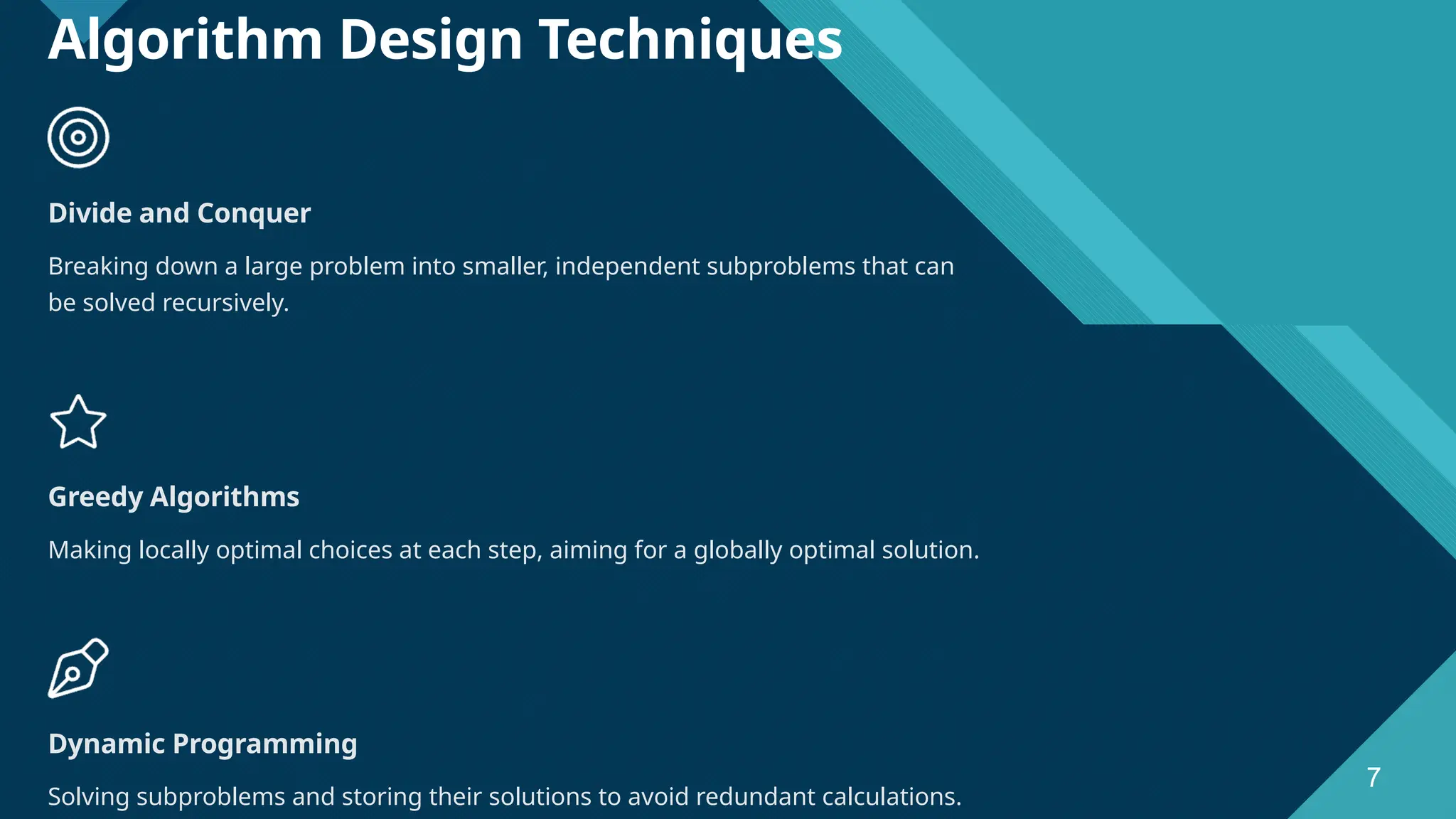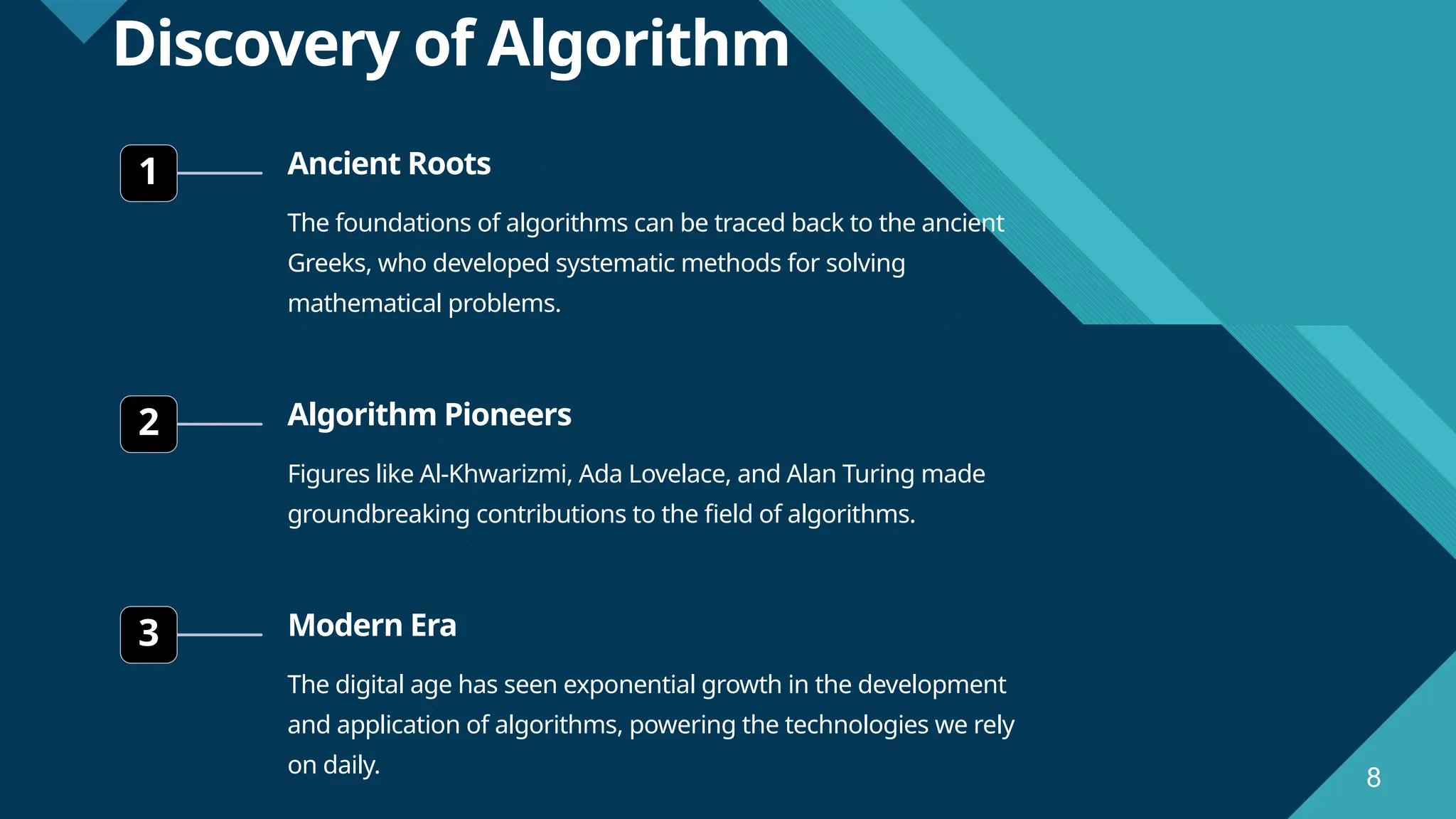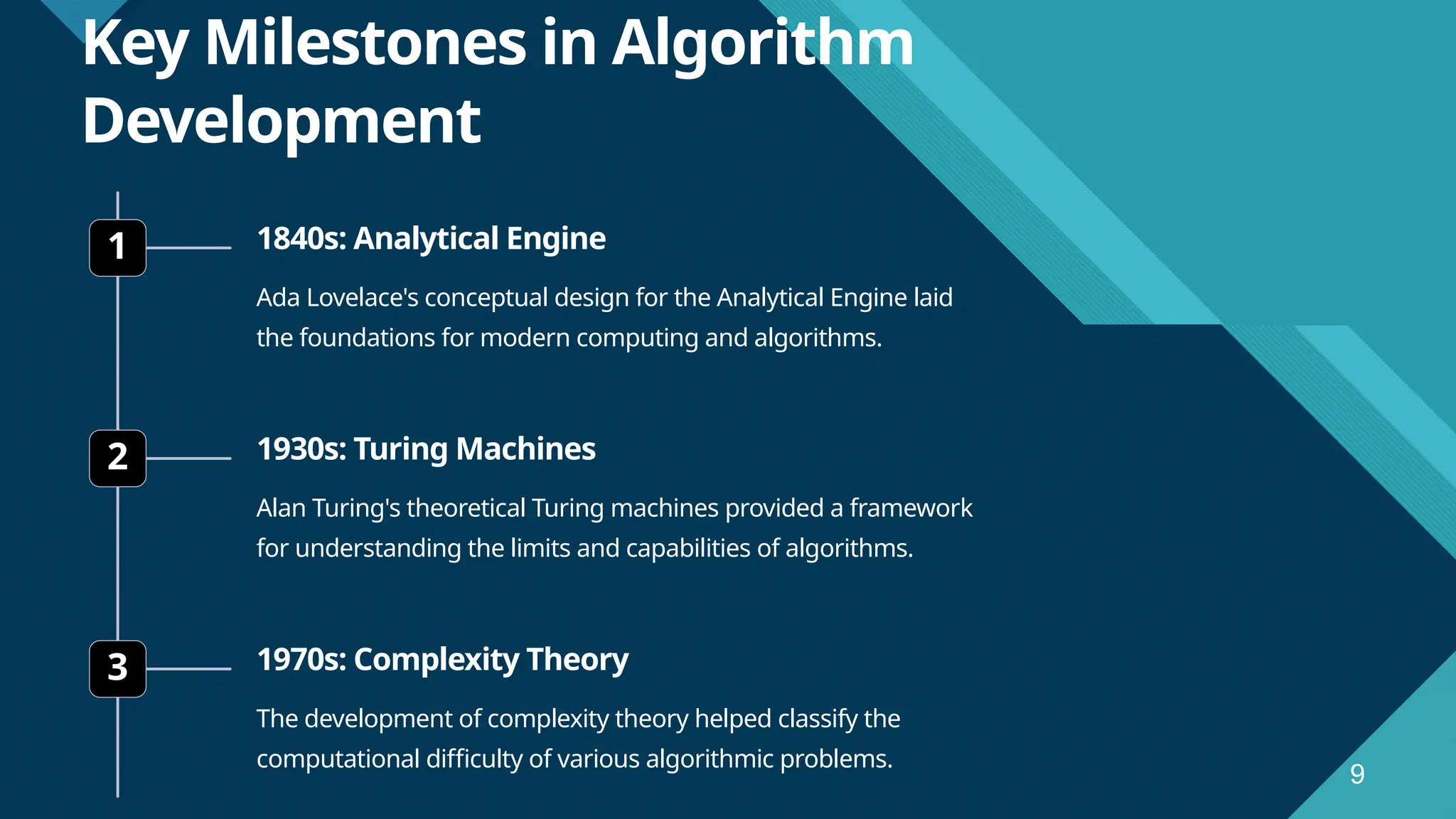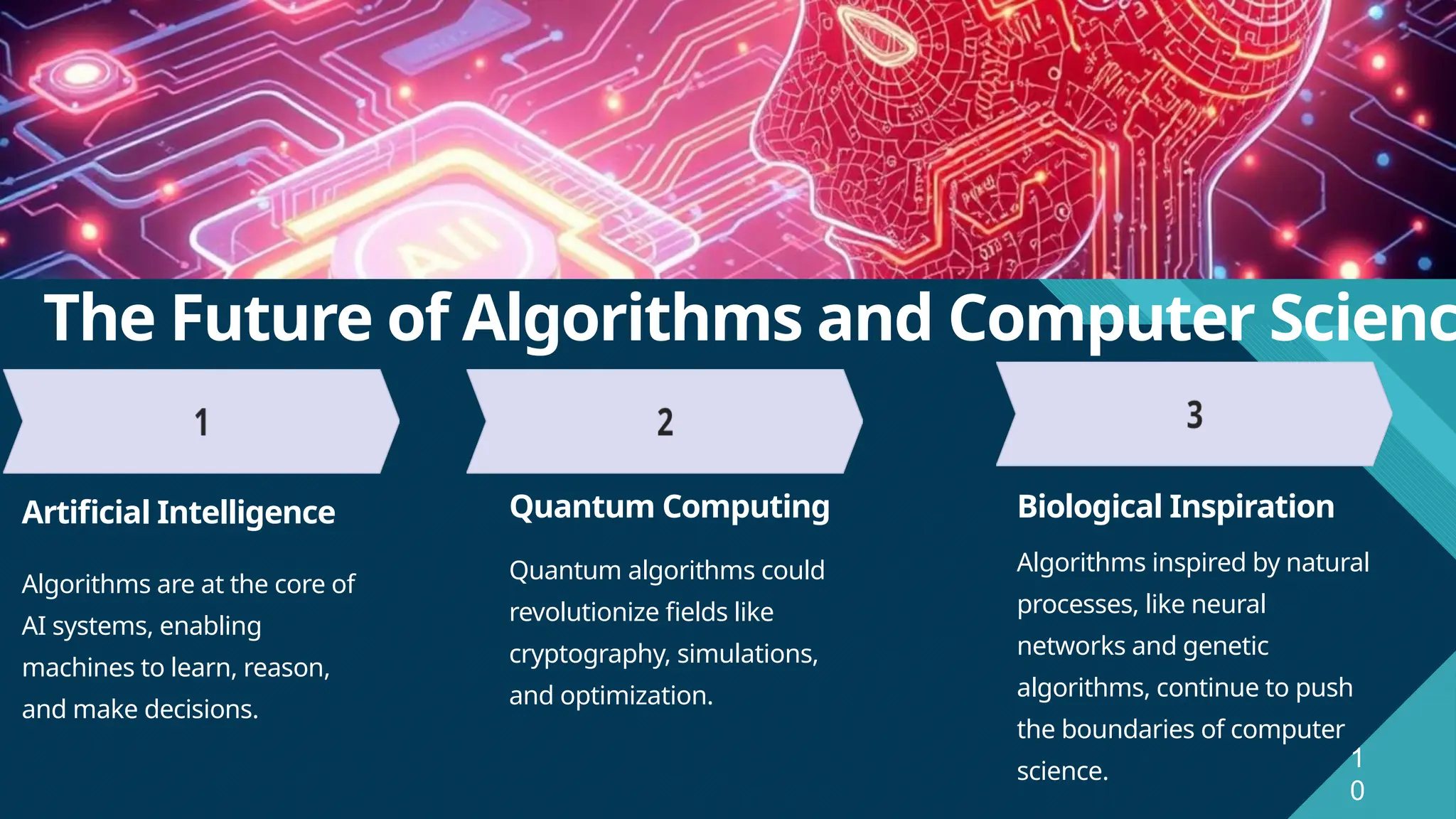The document provides an overview of algorithms, defining them as step-by-step instructions for problem-solving that include key characteristics like being well-defined, finite, and effective. It discusses algorithm design, representation techniques such as pseudocode and flowcharts, and highlights historical figures and milestones in algorithm development. The document also touches on future trends in algorithms, including applications in artificial intelligence and quantum computing.
